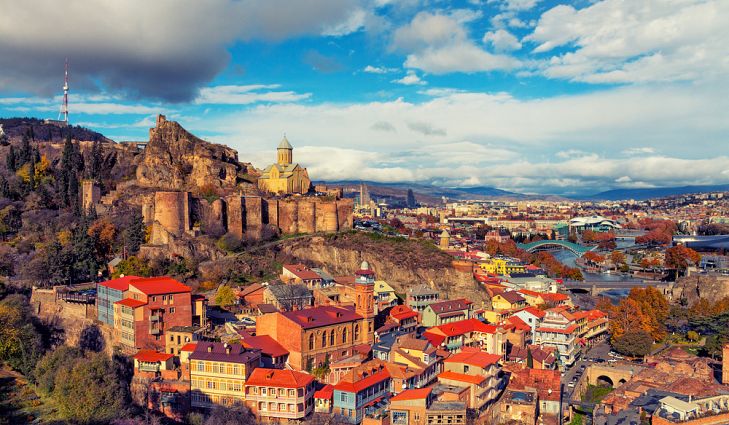INTERESTING FACTS ABOUT EUROPE – Part 1
1. EUROPE HAS THE HIGHEST GDP (INCOME PER PERSON)
Some of the richest countries in the world can be found in Europe, such as Luxembourg, Switzerland, Norway, Austria, and Iceland to name a few that has some of the highest GDP per capita in the world.
The reason for Europe having the highest GDP per capita as a continent is due to the fact that many countries have strong economies, whereas the other continents have a large share of poor countries.
2. IT WAS NAMED AFTER THE PHOENICIAN PRINCESS EUROPA
The Ancient Greeks divided the world into three major units, Europe, Asia, and Libya. There are actually several theories on how Europe got its name, but one of the most popular legends is the one where the Phoenician Princess Europa was kidnapped by Zeus.
3. EUROPEANS EAT 50% OF ALL THE WORLD’S CHOCOLATE
And yes, we love chocolate. More than 50% of the total world production of chocolate is sold and eaten by Europeans. Switzerland has the highest consumption per capita, second to Germany.
4. THE FIRST HUMANS ARRIVED HERE AROUND 38,000 B.C
This time was known as the Upper Palaeolithic and the first Europeans are thought to have come from Central and West Asia. Europeans also have the highest amount of Neanderthal which strengthens the theory of Neanderthals and Modern humans mixed from time to time.
Neanderthals lived on the continent before modern humans arrived some 40,000 years ago. Definitely one of the most interesting facts about Europe!
5. BLONDE HAIR IN HUMANS DEVELOPED IN NORTHERN EUROPE
Blonde hair is believed to have evolved to enable more efficient synthesis of vitamin D, due to the fact that there is less sunlight in Northern Europe.
Scientists have estimated that the mutation that resulted in blonde hair in Europe happened during the last ice age, some 11,000 years ago.
But it isn’t unique to Northern Europe because some natives of the Solomon Islands, Vanuatu, and Fiji, as well as the Berbers of North Africa, have all developed blonde hair within their population.
6. COUNTING EUROPEAN COUNTRIES IS DIFFICULT
If you ask someone how many countries there are in Europe, the answers you get can vary from 44 to as many as 64 depending on how you count countries, and if countries that are not wholly European should be included or not.
For example, Russia, Turkey, Azerbaijan, Kazakhstan, Georgia have a land area in both the European and Asian continent, mostly on the Asian continent though. And Cyprus and Armenia often count towards Europe even though they’re closer to Asia geographically.
To make it even more confusing, Cyprus is a member of the European Union. Then there are non-sovereign territories that could be counted as a country: Guernsey, Jersey, Isle of Man, Gibraltar, Akrotiri and Dhekelia, Faroe Islands, Åland, and Svalbard.
50 countries are the most commonly used answer number though with additional 5 territories that have yet to be fully recognized
7. EUROPE IS ACTUALLY MADE UP OF SEVERAL CULTURES
While Europeans can identify themselves as a European, they also have their own country identity or even regional identity. Europe has some of the most diverse cultures and traditions preserved in the world.
The national pride is high in several European countries.
In the picture below, you can see some of the different folk costumes. Every European country has its own version, and many wear these attires on national holidays or big celebrations.
Many regions within the countries have their own costumes as well. This is just one of the many interesting facts about Europeans!
8. THERE IS A RAINFOREST IN EUROPE
It is not the same as the Amazon rainforest though, but the Perucica forest in Bosnia and Hercegovina is the last surviving rainforest in Europe. It’s a primeval forest and it is only allowed to explore it in the company of trained rangers. It is located in the Sutjeska National Park.
9. ALMOST HALF OF THE WORLD’S WINE IS PRODUCED ON THE CONTINENT
Italy, Spain, and France are the biggest wine producing countries in Europe, and together they account for about 70% of the total wine production in the world. But Europeans really love their wine, and most European countries have at least a small production of local wines.
10. THE PLAGUE KILLED ABOUT 60% OF ALL EUROPEANS
More than half of the European population died during the plague, also known as the Black Death.
It spread during medieval times and in just a couple of years it had wiped out more than 50 million people. It spread mostly via infected rodents, mostly the black rat. Most victims died in just 10 days after getting the disease.
In total it is believed that the plague killed up to 200 million people, and it is still not fully eradicated.
MORE INTERESTING FACTS NEXT WEEK ! 🙂
SOURCE: Alex Waltner – Swedish Nomad


Leave a Reply
You must be logged in to post a comment.